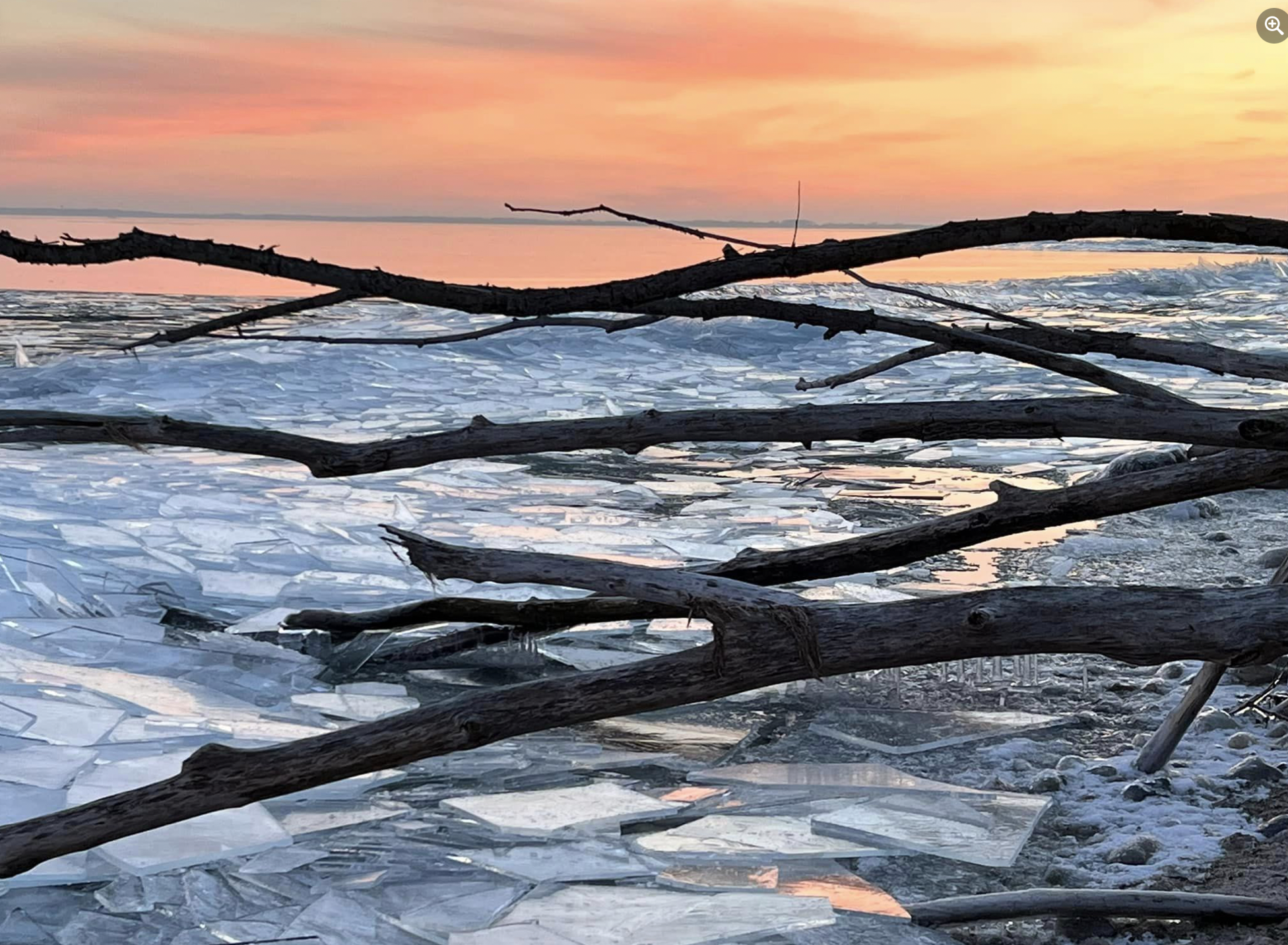Lake Erie's Ice Cover is Nonexistent
As we head into February, Lake Erie is essentially ice free. What exactly does that mean?

If you look at the graph, Lake Erie is basically flatlining.
What that means is we have essentially zero ice cover, whereas, in a normal winter, we'd be halfway up a mountain of ice expected to peak in mid-February.
The graph, which you can see here, is compiled by the Great Lakes Environmental Research Laboratory, a federal scientific research facility based in Ann Arbor, Michigan, operating as part of the National Oceanic and Atmospheric Administration (NOAA) Office.
It shows that, while our ice coverage shot up thanks to a late December freeze, warmer temperatures have subsequently sent us on a slide back to zero ice coverage.
The photo at the top of this article shows what's called window pane ice, which occurs when a thin layer of ice is pummeled and broken by strong winds. (The photo was taken by Put-in-Bay, Ohio, photographer and explorer Barry Koehler, who also took captured this winter's jaw-dropping seiche.)
In other words, the little bit of ice we did have is now long gone.
So how are the rest of the Great Lakes faring?
According to GLERL, none are all quite as ice-free as Lake Erie, but all are well below average. The total ice cover on the Great Lakes is currently 6.7%.
So what does all this mean?
Sure, it's a total bummer for anyone who likes to fish on a frozen lake, but are there deeper implications?
First of all, ice cover drives the weather. In the near term this may mean more lake-effect snow, but as air temperatures rise it could also mean more lake-effect rain.
But there are also ecological impacts, which are addressed by another agency in Ann Arbor set up by the NOAA to study our Great Lakes — the Great Lakes Integrated Sciences and Assessments Center. Possible impacts include:
• Plankton are more resilient when protected by a layer of ice.
• Coldwater fish species such as whitefish and lake trout will be forced to compete with warm-water species migrating north with rising temperatures.
• Declining ice cover could also stress whitefish reproduction in Lake Superior where ice protects eggs from winter storm disturbance.
• Increases in extreme precipitation, runoff, and nutrient loading can create conditions favorable to toxic algal bloom formation.
It's the last threat — toxic algal — that might cause Lake Erie the most trouble.
There's still time for the lake to freeze at least partially — and this is a story we'll continue to monitor and update.
Want more Lake Erie in your life? Subscribe to our free The Splash newsletter. It’s your guide to the best food, drinks, parks, beaches, shopping, festivals, music and more. Click here to subscribe.






